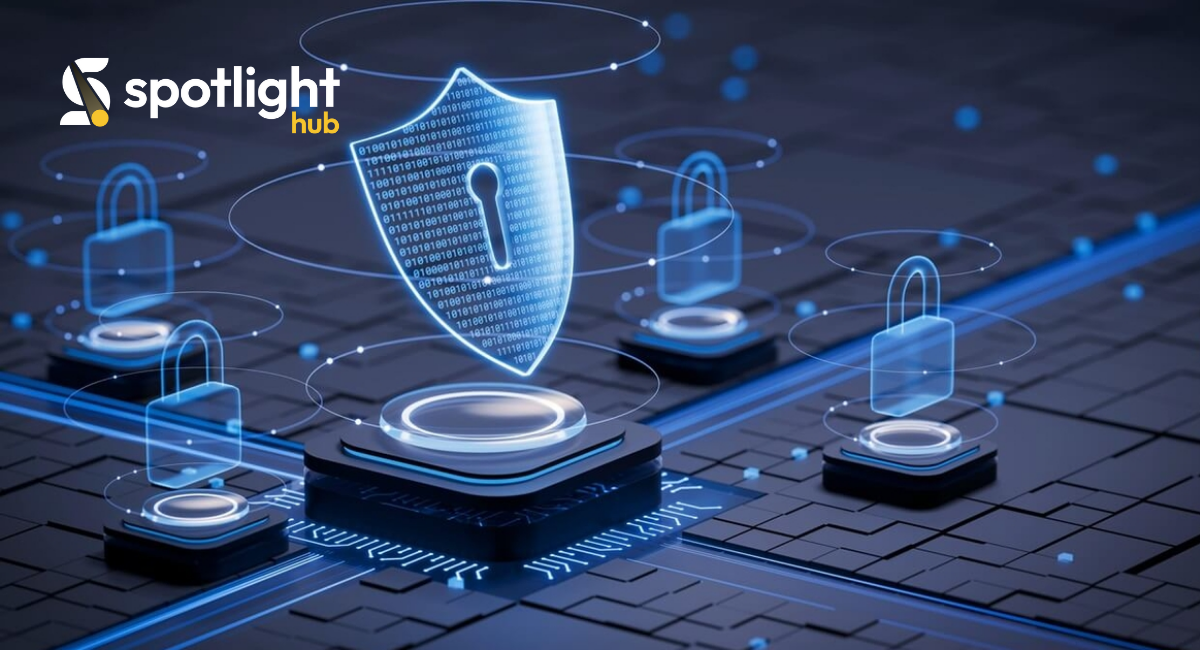As more of our lives move online, securing personal and business data has become increasingly important. Cyber threats are getting smarter, and keeping your information safe requires being proactive. From simple phishing attempts to more complex attacks like ransomware, the risks are growing every day. This blog takes a look at the top cybersecurity trends, how to protect your data, and why it’s essential to stay ahead in 2025.
Top Cybersecurity Trends to Watch in 2025
1. Zero-Trust Security Models
Traditional security systems usually focus on protecting the network’s perimeter, trusting that anyone inside the network is safe. But that’s changing. With the zero-trust model, no one is automatically trusted. Whether you’re inside or outside the network, you need to prove who you are before getting access.
In simple terms, zero-trust means “never trust, always verify.” Every time someone tries to access information or systems, they need to go through checks to ensure they’re authorized. This model helps reduce the risk of a breach, even if an attacker manages to get inside the network.
2. AI and Machine Learning for Threat Detection
Cyber threats are constantly evolving, and so are the tools designed to catch them. AI and machine learning are being used more and more in cybersecurity to spot unusual activity and potential risks faster than humans can.
These technologies can analyze vast amounts of data in real-time and identify things that seem out of the ordinary. Whether it’s a sudden login attempt from a new location or an odd pattern of data transfer, AI is capable of spotting it quickly and taking action before any real damage is done.
3. Cloud Security and Data Privacy
With more people and businesses relying on cloud services, securing data in the cloud is more important than ever. Cloud security refers to the measures taken to protect data that is stored online rather than on physical devices. This includes securing sensitive information, protecting against unauthorized access, and ensuring that any data you send or receive over the cloud is encrypted and safe.
In 2025, expect cloud providers to focus even more on data encryption, stronger user authentication, and monitoring tools to ensure that data remains safe and compliant with regulations like GDPR.
4. Rising Threats: Phishing, Ransomware, and Social Engineering
Phishing attacks, ransomware, and social engineering continue to be some of the most common ways cybercriminals target individuals and businesses. These attacks often involve tricking users into giving up sensitive information, like login credentials or financial details.
Phishing can come in many forms, from an email that looks like it’s from your bank asking you to verify your account, to a message claiming you’ve won something but need to “claim your prize” by clicking on a link. Ransomware, on the other hand, locks up your files and demands money to get them back. Social engineering is when hackers manipulate people into giving away private information by exploiting trust or fear.
Best Practices for Cybersecurity
1. Strengthen Your Passwords
The first and most basic defense against cyber threats is using strong, unique passwords for all your accounts. This means avoiding obvious choices like “password123” or your pet’s name. Instead, create a password that combines uppercase and lowercase letters, numbers, and special characters. And don’t forget to change your passwords regularly.
Using a password manager can also make life easier. These tools securely store and generate passwords for you, so you don’t have to remember them all.
2. Use Two-Factor Authentication (2FA)
Two-factor authentication (2FA) adds an extra layer of protection to your accounts. Even if a hacker manages to get your password, they won’t be able to access your account without the second form of identification—usually a code sent to your phone.
It’s an easy way to make sure your accounts are safer, and it’s a feature offered by most major online services. If you’re not already using 2FA, it’s time to start.
3. Be Careful with Emails and Links
Phishing attacks are often disguised as emails from companies you trust. If you receive an email asking for sensitive information or directing you to a link, take a second to think before clicking. Check the sender’s email address to see if it matches the official domain, and look for any signs of poor grammar or urgency, which are common indicators of phishing.
If you’re ever in doubt, contact the company directly or go to their website manually to check for updates.
4. Educate Your Team and Family
If you’re running a business or even just managing your household’s digital security, educating those around you is key. Everyone needs to understand the risks and the importance of following best practices, like using strong passwords and being careful with emails. A little awareness can go a long way in preventing a breach.
Consider holding regular training sessions or discussions on cybersecurity, especially if you have employees or younger family members who may not be aware of the latest threats.
5. Keep Software and Devices Updated
Keeping your software up to date is one of the easiest ways to protect your data. Software companies regularly release updates to fix bugs and address security vulnerabilities. By not updating your devices and applications, you’re leaving them open to attacks that exploit these weaknesses.
Enable automatic updates on all your devices, so you’re always using the latest version with the most up-to-date security features.
Benefits of Strong Cybersecurity
1. Data Protection
The main benefit of strong cybersecurity is that it keeps your data safe. Whether it’s your personal information, financial data, or proprietary business info, proper cybersecurity ensures that unauthorized individuals cannot access it.
2. Trust and Reputation
If you run a business, having strong cybersecurity measures builds trust with your customers. People are more likely to do business with you if they feel their data is safe. Trust is one of the most valuable assets a company can have, and cybersecurity helps protect it.
3. Compliance with Laws
With increasing privacy laws like GDPR and CCPA, businesses are required to protect customer data. By adopting good cybersecurity practices, you can ensure that your business complies with these laws, avoiding costly fines and legal problems.
4. Reduced Financial Losses
Data breaches and cyberattacks can be costly—not just in terms of immediate financial loss, but also in damage to your reputation. By taking proactive cybersecurity steps, you can avoid the hefty costs that come with dealing with a security breach, including lost business, legal fees, and penalties.
Conclusion
Cybersecurity in 2025 is about more than just keeping hackers out. It’s about taking proactive steps to protect yourself, your family, and your business from an increasingly sophisticated digital landscape. By strengthening your passwords, enabling two-factor authentication, staying educated on emerging threats, and keeping your software up to date, you’ll be able to keep your data safe.
In a world where digital threats are constantly evolving, it’s crucial to stay one step ahead. With the right cybersecurity practices in place, you can confidently navigate the digital world and protect what matters most.










